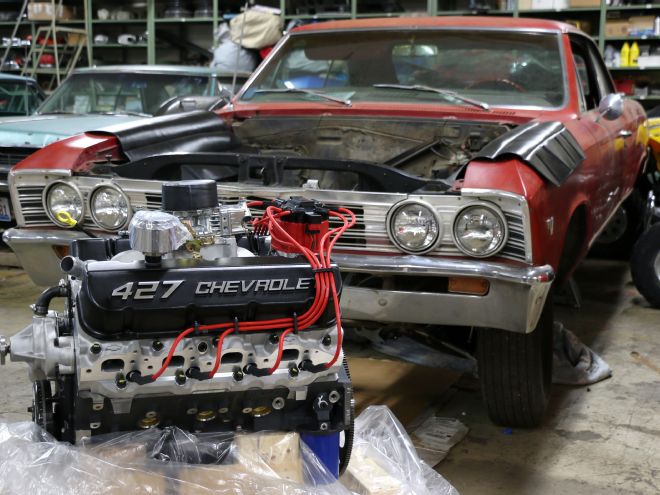
It has been a while since the MaliBeater appeared in MCR, so before we dive into this latest installment on the long-running project car, a bit of background. MaliBeater is the 1967 Chevelle Malibu owned by Brad VanHemert. The car was purchased with a dying motor from the original owner, Alan Schaffer, in 2013 for $5,250. I talked VanHemert into letting MCR use the car for tech stories. It is a lifelong California and Phoenix car that came from the factory with a 283 engine, a column-shift three-speed manual transmission, manual steering, and manual drum brakes.
The Bolero Red A-Body is virtually rust-free and the perfect candidate for a fun driver. The mostly original paint is nicely burned up, but we like it that way. There's a tiny bit of rust activity on the bottom of the passenger fender, and the trunk is weak in a couple spots, but otherwise it is an amazing unrestored original.
You don't need shiny paint and matching numbers to have fun with a muscle car. Frankly, you don't need a muscle car to have muscle car fun. Simply put, clone cars can be a lot of fun. Our attempt is to build a car that might have been in the hands of an ambitious muscle car guy in the late 1960s who stumbled upon a grungy and dirty L88 motor to create a fairly gallant sleeper.
The Bolero Red A-Body is the perfect candidate for a fun driver
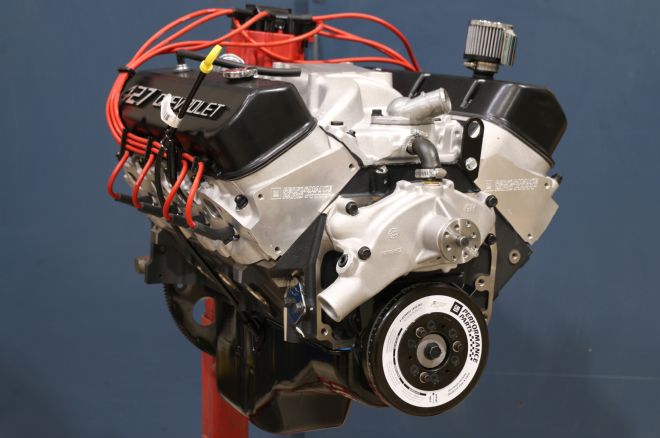
At the start of the MaliBeater build, a 327-inch L79 from a 1966 Corvette was installed at Midwest Muscle Cars. The L79 was a running motor, but it was a bit weak. If there were to be any substantial road trips, a rebuild would be in order. As MCR Editor Drew Hardin and I began to discuss the possibility of taking the MaliBeater to some muscle car events in 2015, roadworthiness became a concern.
We debated the merits of a rebuild versus a transplant. We both liked the idea of the L79, but when the conversation branched out to include other engines, the idea of a big-block was hard to pass up.
It just so happened that Drew was headed to the SEMA Show shortly after one of those discussions. While he was there he struck up a conversation with Chevrolet Performance boss Dr. Jamie Meyers. A short explanation of our Project MaliBeater resulted in some very generous support from Meyers and his team in the form of a brand-new Gen VI ZZ427 crate engine. Rated at 480 hp and touted as a modern-day L88, the ZZ427 carries many of the same features found in the 427ci/430hp L88 introduced in 1967, but with new, high-end Chevrolet components and parts.
You don't need shiny paint and matching numbers to have fun with a muscle car
When the L88 engine was introduced for 1967, it was intentionally underrated at 430 hp from the factory. I still remember staring at a picture of that motor in a Hot Rod magazine astounded by the claims that it made more than 500 hp. A single four-barrel motor that makes more power than a tri-power setup? Who'da thunk it? Interestingly, I believe I was buying into the propaganda Chevrolet was putting out about the L71 and the L88. The factory was trying to steer most customers away from the wild L88 and towards the higher-rated but less powerful L71 427/435 engine sporting the three two-barrel carburetors. Chevrolet must have reasoned that the L88 was too much power for a street car.
As it turned out, word spread quickly that the L88 was far more potent than the L71. Other than the ZL1 (and later the LS6), there was no more coveted big-block motor coming from Chevrolet than the 427/430 L88. History has shown that the L88 generated well over 500 hp with exhaust manifolds and at least another 30 horses with open headers.
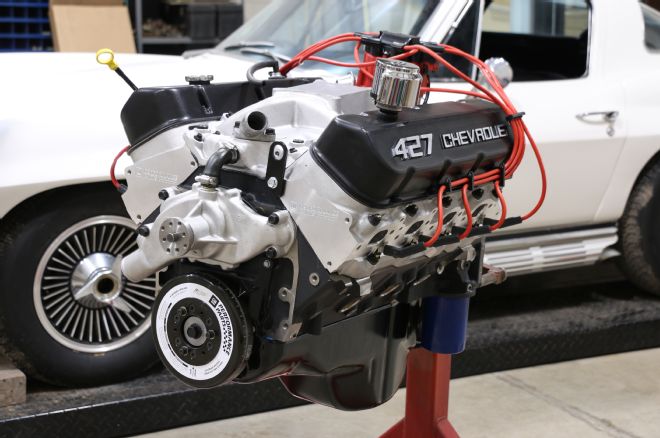
The connection between the L88 and the Gen IV ZZ427 is valid in many ways. Like the L88, the ZZ427 incorporates a four-bolt-main iron block and aluminum cylinder heads. The engine is internally balanced with a forged steel crank and forged steel rods spinning forged aluminum pistons. The compression ratio is 10.1:1, allowing the motor to run on 92-octane pump gas. The hydraulic roller camshaft specs are 0.527-inch intake and 0.544-inch exhaust lift, with 224 degrees intake and 234 degrees exhaust duration at 0.050. The aluminum cylinder heads (PN 19211799) sport 2.190-inch intake and 1.880-inch exhaust valves. The aluminum roller rockers have a 1.7:1 ratio and slick pushrod guideplates. The HEI distributor comes with a melonized steel gear and wires. Chevrolet Performance includes a 770-cfm Holley carburetor with the purchase of the motor.
Prepare for some reliable hearsay: My buddy Mark Webster just installed a ZZ427/480-horse motor in a customer's car. They dyno'd the engine before installation and saw 530 hp at the flywheel. Happy dyno? Possible. I would conclude that Chevrolet is still pretty good at underrating its motors.
Happy as we were with the new engine, we soon realized that a shiny, gleaming powerplant wouldn't look right in the MaliBeater's engine compartment. To make it look more at home—and more like a crusty old L88—we enlisted the help of Corvette and muscle car expert Mike Ardito, a genius at making stuff look vintage. More on that next month.
The factory was trying to steer most customers away from the wild L88
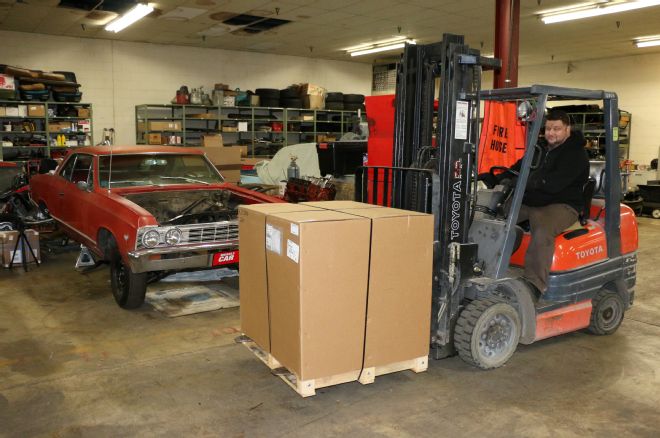
01 Project MaliBeater is being built at Midwest Muscle Cars in Lake Zurich, Illinois. Owner Matt Renz is an adept forklift driver. That big crate is packing 427 ci from Chevrolet Performance.
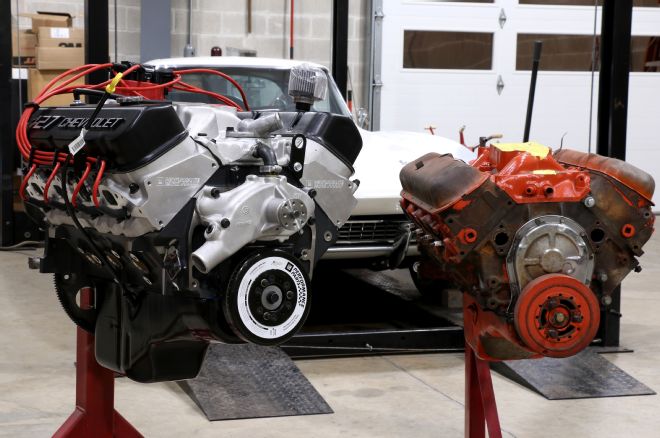
02 Chevrolet Performance rates the ZZ427 engine (left) at 480 hp. The motor is built with the best components in Chevrolet's parts inventory. On the right is a standard-fare, old-school 454 engine. Note high valve/rocker covers for the higher-ratio roller rockers.
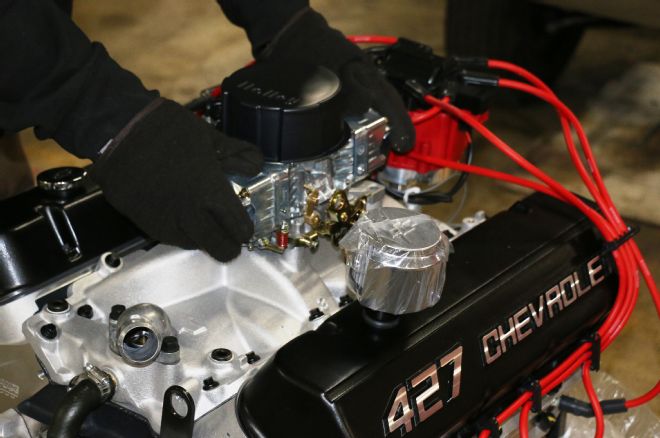
03 Included in the Chevrolet Performance ZZ427 package is this nicely polished Holley 770-cfm four-barrel carburetor with vacuum secondaries and electric choke.
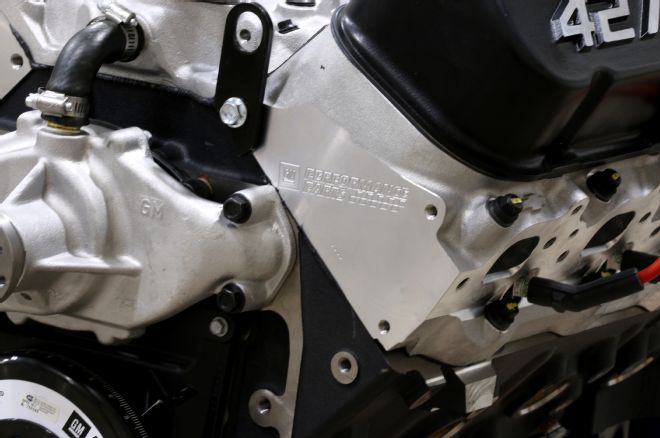
04 Details matter. The motor came with these lift tabs already mounted for ease of installation.
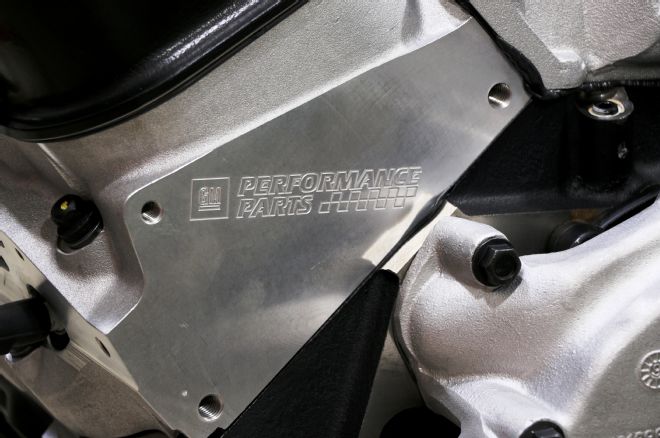
05 Another nice detail: Threaded holes ready for accessory drive mounting.
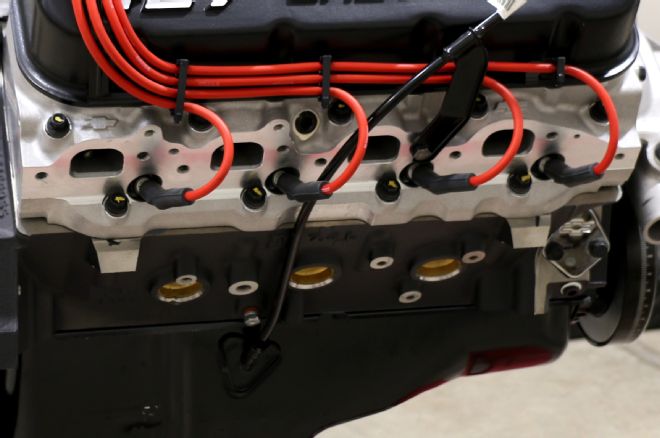
06 The aluminum cylinder heads are designed with high-flow oval ports and 110cc combustion chambers.
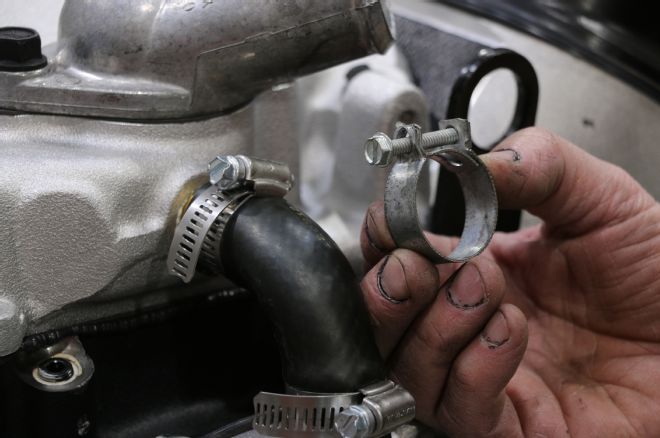
07 Typical modern screw clamps do the job. But how cool might it be to see some vintage hose clamps on this motor?
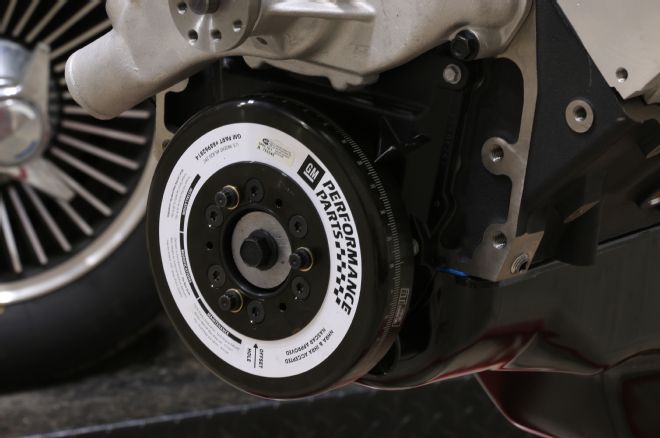
08 The damper included on the ZZ427 is built by ATI and is legal in NHRA, IHRA, and NASCAR. ATI is a leading manufacturer of a number of performance parts, and Chevrolet Performance wisely called on the company to provide a top-quality component for the internally balanced Gen VI engine.
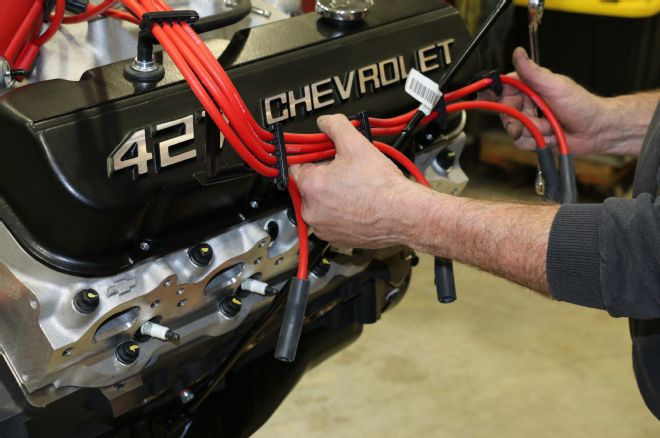
09 The 8mm red spark plug wires included in the ZZ427 package are beautifully routed. The details from Chevrolet Performance make for an impressive package.
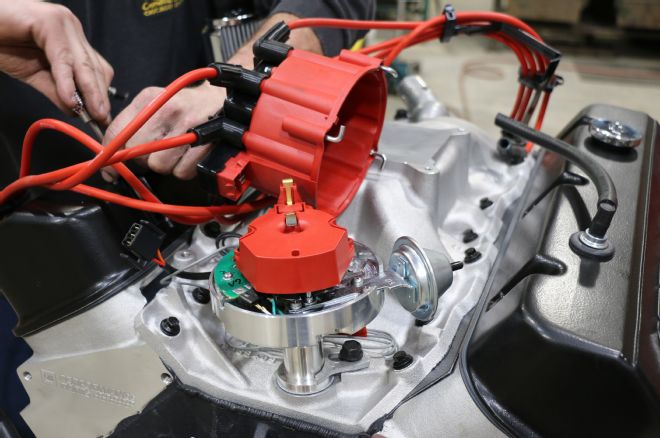
10 The ZZ427 motor comes with an HEI distributor. Because we will be changing this motor to a more vintage look, we will remove this distributor in favor of a stock-looking unit.
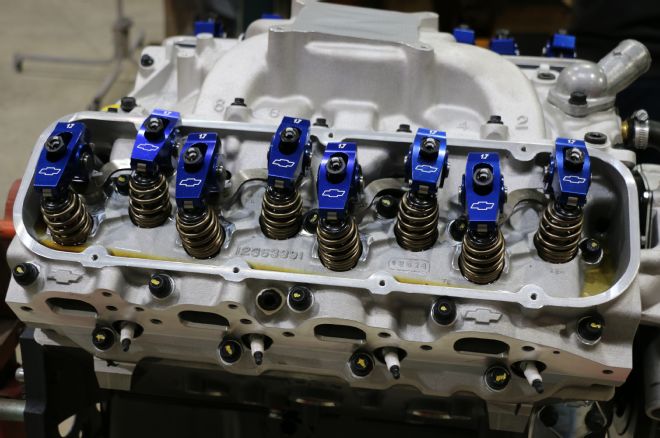
11 The Chevrolet Performance 1.7:1-ratio roller rockers are a work of art. The higher ratio effectively increases cam lift, while the roller rockers nicely complement the roller lifters in decreasing parasitic friction in the valvetrain.
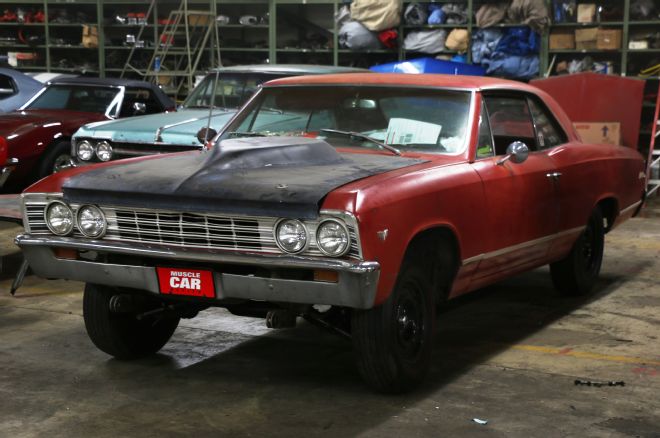
12 Drew Hardin writes, "Arvid lobbied hard for a teardrop hood on the MaliBeater, but I and many of our readers felt that kind of hood belonged on Fords, not Chevys. So we have other plans for topping the ZZ427. But Arvid couldn't resist submitting this photo of his beloved teardrop, with these words: ‘Unless you grew up in New York or New Jersey like I did, you probably do not get the idea of a teardrop hood on a Chevy. It is not just a Ford hood. Just to be clear, on the East Coast, where the Pilgrims landed and the Yankees still play baseball, teardrop hoods were on everything.'"